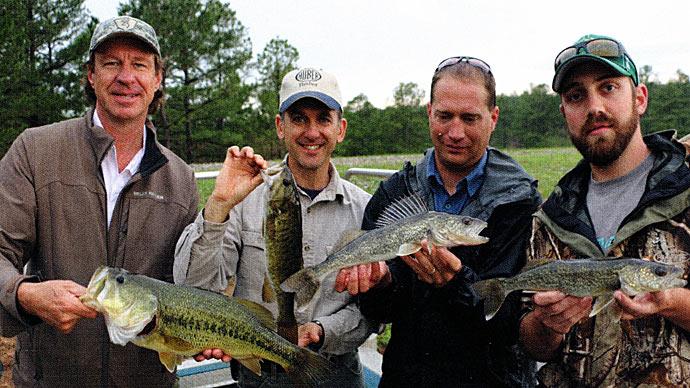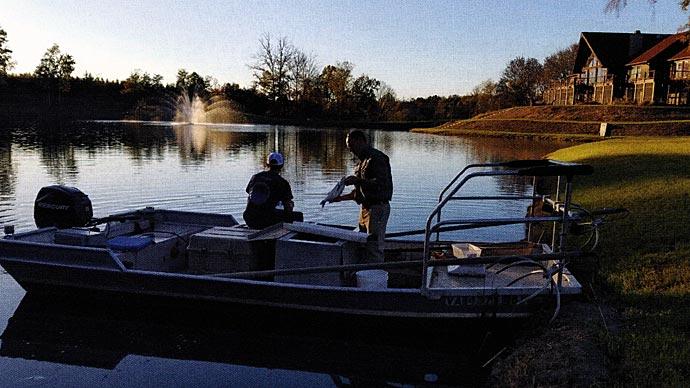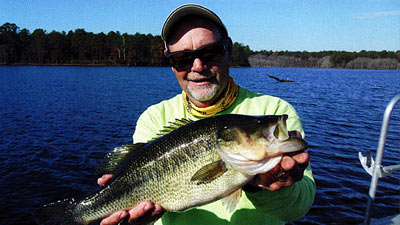
Last Issue we examined summer feeding and growth. This issue we look at fall feeding and energy use. That is the activity of Falling Fish. Fall is an interesting time at the lake from a biological perspective. Many people think of that time of year as a period of rest. In reality, for many pond creatures, it is a period of feeding frenzy, with low growth and packing on fat, for winter survival.
As we observed last issue with respect to high temperatures, fish are cold-blooded, making temperature a critical factor in all biological aspects. Because they are cold-blooded, they grow in warm spring and summer waters, and as the water cools each fall, metabolism slows, but feeding continues rapidly until the temperatures of winter cause everything to slow substantially. If not enough energy reserves of the right type are stored going into cold periods, fish have a difficult time during the frigid months. Fish instinctively know this, so they eat lots during the typical fall, but as they do so, energy use slows and fat is accumulated.
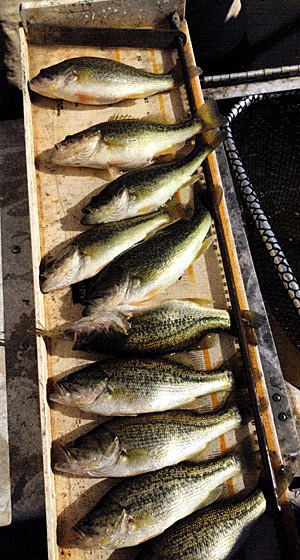
This was noted in Energy Partitioning in Largemouth Bass under Conditions of Seasonally Fluctuating Prey Availability by S. Marshall Adams R, B. McLean and J. A. Parrotta, Transactions of the American Fisheries Society 111:549- 558,1982. In this study, metabolism to maintain condition in a lake where their primary prey (like shad or tilapia) undergo large fluctuations in seasonal abundance, Largemouth bass maximize caloric growth in the fall, store visceral fat, and minimize standard and active metabolic demands in preparation for winter.
This study site was in Tennessee, and like many freshwater systems in temperate areas of the United States, has threadfin and gizzard shad as a primary prey source of several predators. These prey species undergo large temporal fluctuations in abundance, due primarily to heavy winter mortality, which indirectly influenced the demonstrated growth and mortality of a Largemouth bass population in a southeastern reservoir because of prey availability. Winter water temperature dictates the abundance and sizes of available prey, which affect consumption by Largemouth bass and other predators.
Storage of energy (fat/lipids) in the viscera and liver of female Largemouth bass began in early spring and continued until late fall with a minor summer depression. Energy storage by males, however occurred mainly in summer and fall, but also included a summer depression. Last issue we noted this summer depression in growth was due to high temperatures.
Growth of females was highest in June following the May peak in consumption (post spawn feeding), and then gradually declined through a summer depression in growth and consumption. Males had high levels of growth in the summer and fall. Here we note that both male and female bass added fat during the fall. Both sexes built up their fat reserves in the fall when consumption (fall feeding) was high, as evidenced by the fall increase in the visceralsomatic index (VSI). Decreases in VSI in both sexes during the winter and early spring probably were due to utilization of stored fat to meet metabolic demands when feeding was low, which is also reported for other fish species.
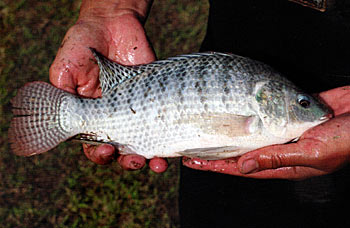
Obviously, different species of fish differ in their ability to use fat deposits. This in turn affects the temperature range in which different species can grow and survive. For example, Nile tilapia do not store excess lipids in the muscles, but rather rely on visceral deposits that it is incapable of using at low temperatures, which results in high mortalities when water cools. However, many pond species that are capable of using lipids (fat) from muscular and visceral deposits are able to survive to much colder temperatures under the same conditions. It is believed that the lipid composition in the fish muscle plays a vital role in the ability of fish to adapt from one temperature to another. Variations in the liver weight of Largemouth bass reflect storage of glycogen, fat, and water, which vary with consumption rate. Consumption was high during the late spring and summer, yet the liver-somatic index (LSI) of both sexes declined. This decline may have been related to utilization of energy for reproduction and temperature-induced metabolic demands. Other studies have found this same pattern in the LSI for field-collected bluegill over a year, and attributed the low summer LSI to spawning and temperature.
It is in the fall period when many species accumulate these fat deposits while adjusting to a lower metabolism. Of course, it depends on pond location and the type of fish involved. In one report, bluegill consumed at higher rates in the fall and consumed very little food during the winter in more northern climates, much like the Largemouth bass. Whereas Yellow perch (a cool water fish) ate much more food than did bluegills during the winter and did not have to indulge in the fall feeding frenzy to the same degree.
Reprinted with permission from Pond Boss Magazine

